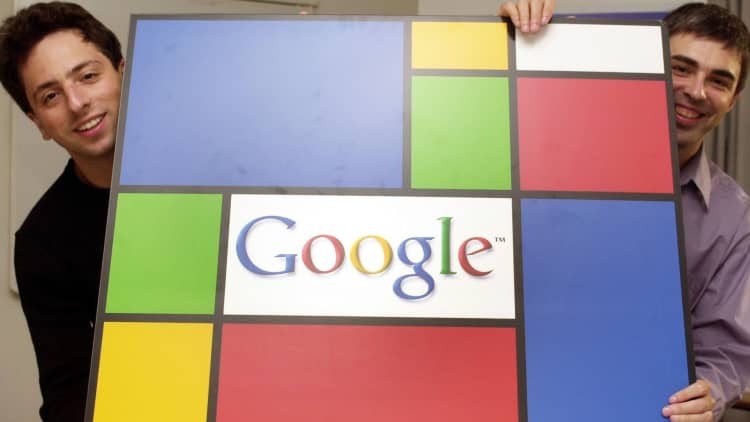The magic of working at Google is that the reputation and the aura of the place stay with you after you leave. Perhaps even more importantly, so do the lessons you learned.
That's what Kamakshi Sivaramakrishnan and Stephanie Tilenius, both founders of flourishing start-ups, have discovered. Both had stints at Google. And they both say that working for the tech giant contributed to their success.
Here are the five lessons these entrepreneurs took with them from Mountain View, Calif., to their own businesses.
1. Think by the decade
"The refreshing thing about Google was that everybody thought really big and though in 10 year time-frames," Tilenius says. She recently addressed the Vanity Fair Founders Fair in New York City about her experiences launching Vida, an app that pairs you with 24/7 access to a health coach.
Tilenius remembers presenting Google shopping to Sergey Brin in 2010. Tilenius and her team were thrilled to have demonstrated that an order arrived from a local Best Buy as expected. But Brin was already looking towards the horizon: "I just want balloons from the sky to drop down and put a package in front of your doorstep." Brin was picturing was drone package-delivery at a time when drone package-delivery wasn't much more than a day dream.
"That thinking was everywhere" at Google, Tilenius says.
2. New products have to be like a toothbrush
Larry Page was known for saying that new products have to be like a toothbrush, Tilenius says. What he means is that if you are going to build something, it ought to be a product that consumers are going to use multiple times a day.
Vida's first target users have chronic conditions they are managing. And those patients need Vida every day, Tilenius says.
3. Engineers can do more than code
In most tech companies, engineers are relegated to one very specific task: writing computer programs, says Sivaramakrishnan, who is herself an engineer.
"Engineers sit in the dungeon and code," she says. "Google is an environment where it is extremely empowering for engineers."
Sivaramakrishnan learned to have the confidence to imagine herself as a CEO in her time at Google: "I think that comes from Larry and Sergey from their own engineering background as well."
In 2010, she launched Drawbridge, a company that builds technology to connect user's screens and devices without relying their personal security information.
4. To move quickly, everyone has to understand what's going on
Sivaramakrishnan was impressed with the free flow of information at Google. "I haven't seen a company, at the scale of Google — the kind of transparency that is there across the organization — it's a very healthy culture," she says.
"Creating an environment of information exchange was very impactful, at least for me, and that I carried forward in the company I founded."
Google had a weekly all-hands meeting in the time Tilenius worked there and as many as 30,000 employees attended either in person, by phone or by video conference. Eric Schmidt sometimes share confidential corporate information at those meetings. Of course, there was the risk that one of those employees would leak confidential information. But the culture in place strongly discouraged that.
To be a Google employee meant that you were trusted.
"People are really smart, and you have got to give them the benefit of the doubt," says Tilenius. She has implemented a similar strategy at Vida, and it helps. "To move fast you need full transparency and context."
5. For a project to be important, it has to have scale
"The whole notion of scale is so built into you," when you work at Google, says Sivaramakrishnan. "Anything less than 100 million is not worth talking about inside Google."
Drawbridge, which has 150 employees, reaches more than 1.3 billion consumers across more than 3.3 billion devices around the globe. Already, it has raised $45.5 million in venture capital.
Anything less than 100 million is not worth talking about inside Google.Kamakshi Sivaramakrishnanfounder of Drawbridge
To be a start-up founder, though, Tilenius had to temporarily "unlearn" the lesson of scale. In the first days of launching Vida, she had to start small.
"There were days when I had to say, 'Stop thinking about a hundred million. It's okay. Think about 10, think about 20, think about 100,'" she says. "It's all about the love of those users."
When your start-up has processes and products in place, then you start thinking about scale. But that takes time, Tilenius says.
Read more:
The US wastes 62 million tons of food a year—this Howard Buffett-backed start-up has a solution
27-year-old who launched a 7-figure business says this was his biggest mistake




